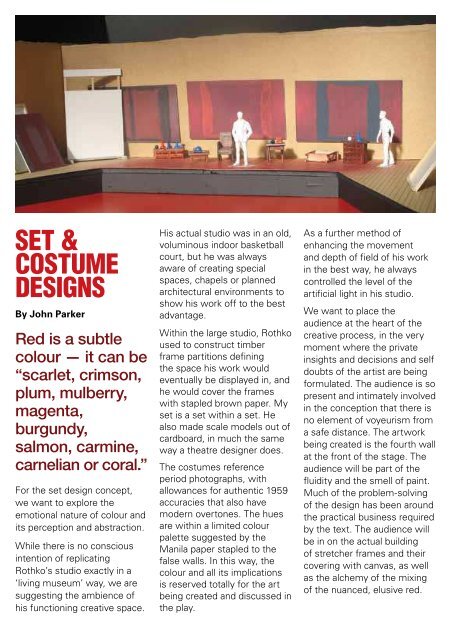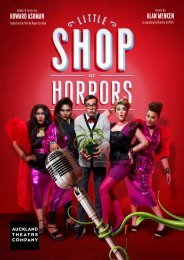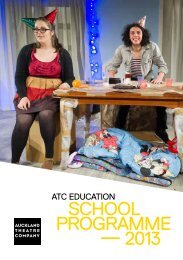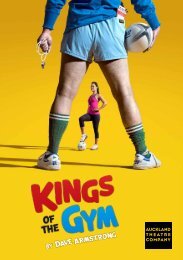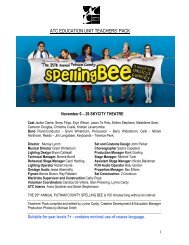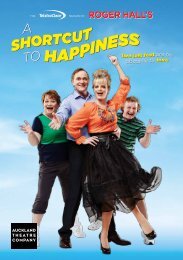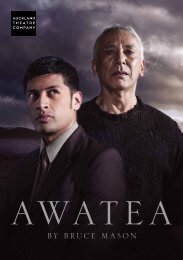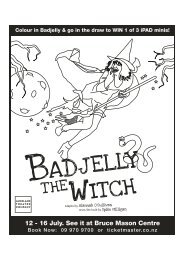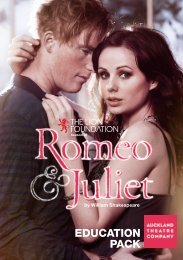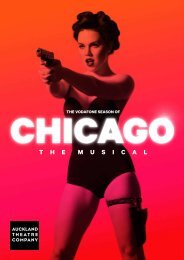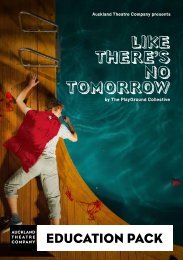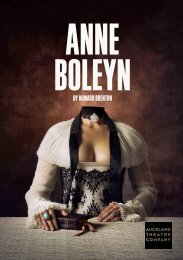You also want an ePaper? Increase the reach of your titles
YUMPU automatically turns print PDFs into web optimized ePapers that Google loves.
SeT &<br />
coSTUme<br />
DeSIGNS<br />
<strong>By</strong> <strong>John</strong> Parker<br />
Red is a subtle<br />
colour — it can be<br />
“scarlet, crimson,<br />
plum, mulberry,<br />
magenta,<br />
burgundy,<br />
salmon, carmine,<br />
carnelian or coral.”<br />
For the set design concept,<br />
we want to explore the<br />
emotional nature of colour and<br />
its perception and abstraction.<br />
While there is no conscious<br />
intention of replicating<br />
Rothko’s studio exactly in a<br />
‘living museum’ way, we are<br />
suggesting the ambience of<br />
his functioning creative space.<br />
His actual studio was in an old,<br />
voluminous indoor basketball<br />
court, but he was always<br />
aware of creating special<br />
spaces, chapels or planned<br />
architectural environments to<br />
show his work off to the best<br />
advantage.<br />
Within the large studio, Rothko<br />
used to construct timber<br />
frame partitions defining<br />
the space his work would<br />
eventually be displayed in, and<br />
he would cover the frames<br />
with stapled brown paper. My<br />
set is a set within a set. He<br />
also made scale models out of<br />
cardboard, in much the same<br />
way a theatre designer does.<br />
The costumes reference<br />
period photographs, with<br />
allowances for authentic 1959<br />
accuracies that also have<br />
modern overtones. The hues<br />
are within a limited colour<br />
palette suggested by the<br />
Manila paper stapled to the<br />
false walls. In this way, the<br />
colour and all its implications<br />
is reserved totally for the art<br />
being created and discussed in<br />
the play.<br />
As a further method of<br />
enhancing the movement<br />
and depth of field of his work<br />
in the best way, he always<br />
controlled the level of the<br />
artificial light in his studio.<br />
We want to place the<br />
audience at the heart of the<br />
creative process, in the very<br />
moment where the private<br />
insights and decisions and self<br />
doubts of the artist are being<br />
formulated. The audience is so<br />
present and intimately involved<br />
in the conception that there is<br />
no element of voyeurism from<br />
a safe distance. The artwork<br />
being created is the fourth wall<br />
at the front of the stage. The<br />
audience will be part of the<br />
fluidity and the smell of paint.<br />
Much of the problem-solving<br />
of the design has been around<br />
the practical business required<br />
by the text. The audience will<br />
be in on the actual building<br />
of stretcher frames and their<br />
covering with canvas, as well<br />
as the alchemy of the mixing<br />
of the nuanced, elusive red.


